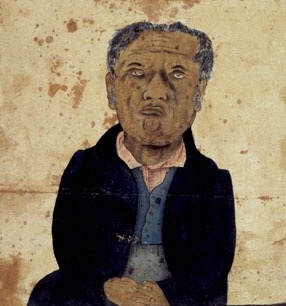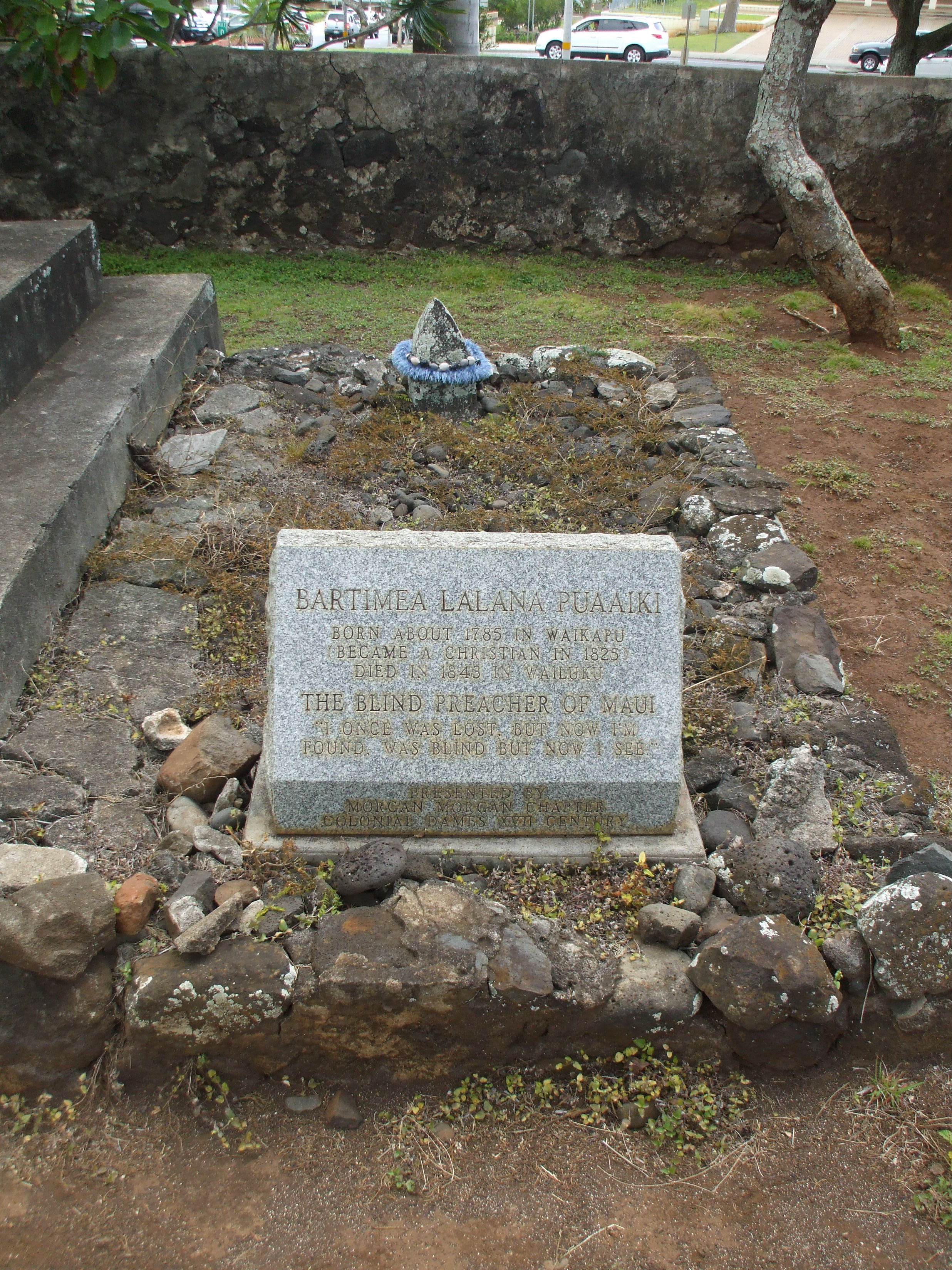Puaaiki on:
[Wikipedia]
[Google]
[Amazon]
 Bartimeus Lalana Puaʻaiki ( – February 21, 1844) was an early convert and the first
Bartimeus Lalana Puaʻaiki ( – February 21, 1844) was an early convert and the first
 He died on February 21, 1844, at his post in
He died on February 21, 1844, at his post in
 Bartimeus Lalana Puaʻaiki ( – February 21, 1844) was an early convert and the first
Bartimeus Lalana Puaʻaiki ( – February 21, 1844) was an early convert and the first Native Hawaiian
Native Hawaiians (also known as Indigenous Hawaiians, Kānaka Maoli, Aboriginal Hawaiians, First Hawaiians, or simply Hawaiians) ( haw, kānaka, , , and ), are the indigenous ethnic group of Polynesian people of the Hawaiian Islands.
Hawa ...
to be licensed to preach Protestant Christianity. Prior to his conversion, he served as a hula
Hula () is a Hawaiian dance form accompanied by chant (oli) or song ( mele). It was developed in the Hawaiian Islands by the Native Hawaiians who originally settled there. The hula dramatizes or portrays the words of the oli or mele in a visua ...
dancer in the court of King Kamehameha II
Kamehameha II (November 1797 – July 14, 1824) was the second king of the Kingdom of Hawaii. His birth name was Liholiho and full name was Kalaninui kua Liholiho i ke kapu ʻIolani. It was lengthened to Kalani Kaleiʻaimoku o Kaiwikapu o Laʻ ...
and Queen Kamāmalu
Kamāmalu Kalani-Kuaʻana-o-Kamehamalu-Kekūāiwa-o-kalani-Kealiʻi-Hoʻopili-a-Walu (–1824) was Queen consort of the Kingdom of Hawaiʻi as the wife of King Kamehameha II. Kamāmalu was short for Kamehamalu or Kamehamehamalu meaning "the Shade ...
.
Life
Born circa 1785, in Waikapu on the island of Maui, Puaʻaiki was encumbered with birth defects which rendered him short-statured and visually impaired (partially blind) in later life. His mother attempted to bury him but a solicitous relative rescued him. He was given the name Puaʻaiki meaning "little pig" in the Hawaiian language. In the court of KingKamehameha II
Kamehameha II (November 1797 – July 14, 1824) was the second king of the Kingdom of Hawaii. His birth name was Liholiho and full name was Kalaninui kua Liholiho i ke kapu ʻIolani. It was lengthened to Kalani Kaleiʻaimoku o Kaiwikapu o Laʻ ...
he served as a hula
Hula () is a Hawaiian dance form accompanied by chant (oli) or song ( mele). It was developed in the Hawaiian Islands by the Native Hawaiians who originally settled there. The hula dramatizes or portrays the words of the oli or mele in a visua ...
dancer and was a member of the retinue of Queen Kamāmalu
Kamāmalu Kalani-Kuaʻana-o-Kamehamalu-Kekūāiwa-o-kalani-Kealiʻi-Hoʻopili-a-Walu (–1824) was Queen consort of the Kingdom of Hawaiʻi as the wife of King Kamehameha II. Kamāmalu was short for Kamehamalu or Kamehamehamalu meaning "the Shade ...
. After the arrival of Christian missionaries in 1820, he converted to the new faith.
After conversion, he became known as the "Blind Preacher of Maui" or "Blind Bartimeus", after the Biblical Bartimaeus who was healed by Jesus
Jesus, likely from he, יֵשׁוּעַ, translit=Yēšūaʿ, label= Hebrew/ Aramaic ( AD 30 or 33), also referred to as Jesus Christ or Jesus of Nazareth (among other names and titles), was a first-century Jewish preacher and religiou ...
.; ; In 1841, Puaʻaiki became the first Native Hawaiian
Native Hawaiians (also known as Indigenous Hawaiians, Kānaka Maoli, Aboriginal Hawaiians, First Hawaiians, or simply Hawaiians) ( haw, kānaka, , , and ), are the indigenous ethnic group of Polynesian people of the Hawaiian Islands.
Hawa ...
licensed to preach at his small congregation at Honuaula, Maui. As a religious teacher, he was not fully ordained and was more or less under the supervision of another missionary. David Malo
David Malo or Davida Malo (1795–1853) was a chiefly counselor, a Hawaiian intellectual, educator, politician and minister. He is remembered by subsequent generations of Hawaiian people and scholars primarily as a Native Hawaiian historian of the ...
, the celebrated Hawaiian educator and historian, became the second licensed religious teacher in 1843. It would not be until 1849 when, James Kekela
James Hunnewell Kekela (May 22, 1824 – November 29, 1904) was born in Mokulēʻia, Waialua, on the island of Oahu. He was the first Native Hawaiian to be ordained a Protestant minister in 1849. He worked as a missionary in the Marquesas Islands ...
was ordained as the first Native Hawaiian Protestant minister.
Wailuku
Wailuku is a census-designated place (CDP) in and county seat of Maui County, Hawaii, United States. The population was 17,697 at the 2020 census.
Wailuku is located just west of Kahului, at the mouth of the Iao Valley. In the early 20th centur ...
. He was buried on February 23, 1844, at the cemetery ground of the Kaʻahumanu Church. In the same year, American missionary Jonathan Smith Green
Jonathan Smith Green (September 29, 1796 – January 5, 1878) was a missionary from New England to the Kingdom of Hawaii.
Life
Green was born December 20, 1796 in Lebanon, Connecticut, to Beriah and Elizabeth Green. He graduated from Andover Sem ...
wrote ''Notices of the Life, Character, and Labors of the Late Bartimeus L. Puaaiki, of Wailuku, Maui, Sandwich Islands'' in his memory.
References
Bibliography
* * * * * * {{DEFAULTSORT:Puaaiki, Bartimeus Lalana 1785 births 1844 deaths People from Maui Hawaiian Kingdom Protestants Congregationalist missionaries in Hawaii Hula dancers Converts to Protestantism from pagan religions Blind clergy